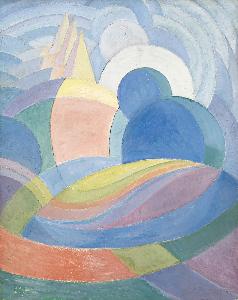Leroy Livingstone De Mestre
Leroy Livingstone De Mestre;Roy De Maistre
Place: Bowral
Born: 1894
Death: 1968
Biography:
Early Life and Experimentation with Colour-Music
Leroy Livingstone De Mestre, an Australian artist of international renown, was born on March 27, 1894. His early work is characterized by a groundbreaking experimentation with 'colour-music', a concept that married the visual and auditory arts. Between 1918 to 1919, in collaboration with Roland Wakelin, De Mestre conducted studies on the relationships between colour and music. This innovative approach led to the development of a colour-music scale, where the spectrum of colours related to notes of the major and minor musical scales.
Abstract and Figurative Works
De Mestre is recognized as the first Australian artist to use pure abstraction. His later works, however, were painted in a figurative style, generally influenced by Cubism. This versatility showcases his broad artistic range. One of his notable series, The Stations of the Cross, hangs in Westminster Cathedral, while his works are also displayed in the Tate Gallery, London, and the Art Gallery of New South Wales, Sydney.
Notable Works and Collections
* A painted picture of the Universe (50 x 40 cm), National Gallery of Victoria (Melbourne, Australia), Oil On Board * The Stations of the Cross, Westminster Cathedral
Legacy and Influence
De Mestre's pioneering work in colour-music and abstraction has left an indelible mark on Australian art. His innovative approach to art has influenced generations of artists, both within Australia and globally.
- View Leroy Livingstone De Mestre's Artworks at Wikioo.org
- Explore the Collection of Australian Artists at Wikioo.org
- Discover more about Leroy Livingstone De Mestre's life and works on Wikipedia
* March 27, 1894: Born * 1918-1919: Experimentation with colour-music * March 1, 1968: Passed away

